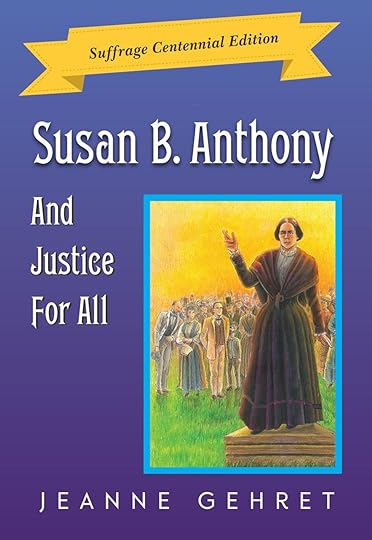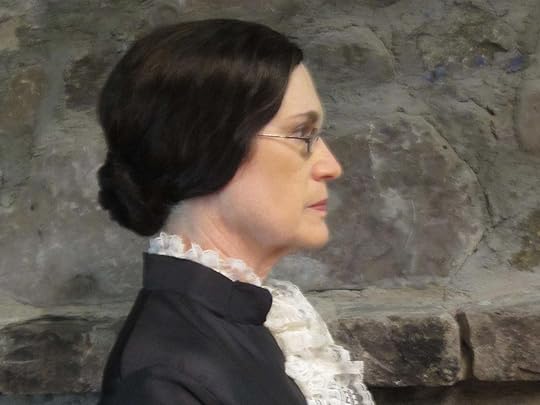Jeanne Gehret's Blog: http://SusanBAnthonyFamily.com/, page 9
July 28, 2017
Why She Should Vote: Susan B. Anthony
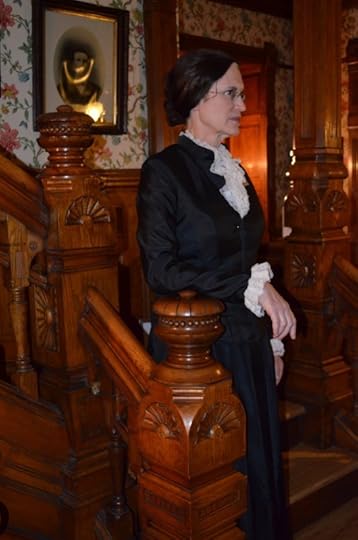 Last week, Perinton and Pittsford filled the halls to hear my “Failure is Impossible” reenactment of Susan B. Anthony. One of the highlights of that talk is a discussion of her arguments about why she should vote. It was great to have a full house and especially fun to entertain people’s thoughts and questions afterwards. Thanks to everyone who attended!
Last week, Perinton and Pittsford filled the halls to hear my “Failure is Impossible” reenactment of Susan B. Anthony. One of the highlights of that talk is a discussion of her arguments about why she should vote. It was great to have a full house and especially fun to entertain people’s thoughts and questions afterwards. Thanks to everyone who attended!
She probably would not have attempted voting had not the U.S. recently passed two equal rights amendments within the previous decade. Let’s talk about them now.
Today is the the one that Susan B. Anthony claimed gave her the right to vote as a woman. Following on the boots of the Civil War, this law amendment gave African-Americans the rights of citizenship and decreed that all citizens should have their rights protected. Two years later, the 15th amendment passed, giving African-Americans the right to vote.
What the Amendments Say
The 14th Amendment to the Constitution granted citizenship to “all persons born or naturalized in the United States,” which included former slaves recently freed. In addition, it forbids states from denying any person “life, liberty or property, without due process of law” or to “deny to any person within its jurisdiction the equal protection of the laws.”
However, the fine print said that adult male citizens should be protected; it did not specifically say that adult females should.
The Fifteenth Amendment to the Constitution prohibits the federal and state governments from denying a citizen the right to vote based on that citizen’s “race, color, or previous condition of servitude”.
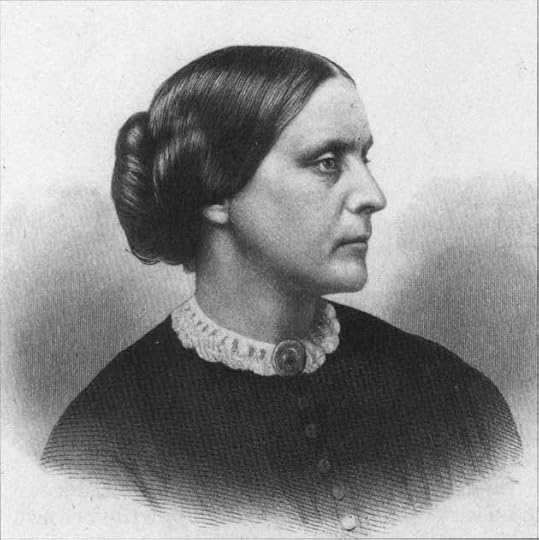 Why Susan B. Anthony Argued That She Should Vote
Why Susan B. Anthony Argued That She Should VoteStudying these two amendments carefully with a noted Constitutional scholar, Susan deduced that they meant this:
Under the 14th amendment, she was a citizen and should have her rights protected.
The 15th amendment specifically protected her citizen’s right to vote. It did not say that she, as a woman, could not vote.
Unfortunately, as we know, the judge who ruled on her case did not agree with her interpretation, and found her “guilty of the crime of voting as a woman.”
Soon you can read all about it in my newly-revised book, Susan B. Anthony And Justice For All. I’ll be posting order information on this Suffrage Centennial edition of my 1994 biography of Susan.
The post Why She Should Vote: Susan B. Anthony appeared first on Susan B. Anthony Family.
July 23, 2017
New York State VoteTilla Celebration
Celebrating Susan B. Anthony and Woman Suffrage
What an exciting week it was in upstate New York as VoteTilla made its way from Seneca Falls to Rochester. I met up with the canal boats on a gorgeous day in Fairport (my hometown) and had a chance to greet several old friends who were traveling with the fleet in costume.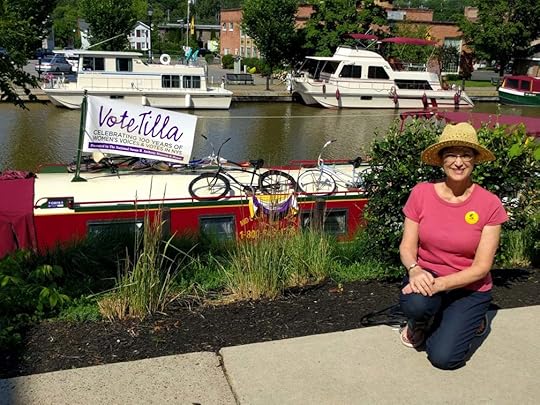
In addition to all the excellent programming done by VoteTilla itself, the libraries and town historical societies put on wonderful programs, including debates, author signings, children’s activities, and more. I had the privilege of presenting my reenactment of Susan B. Anthony to full houses at both the Fairport and Pittsford libraries. Thanks to all those who attended and asked great questions! And special thanks to Vicki Masters Profitt and Mary Ann
August Programs:
Saturday, August 12, Arnett Branch Library, “Failure is Impossible,” noon
Tuesday, August 29, 2017 Pittsford Seniors Lunch, “Failure is Impossible,” noon
The post New York State VoteTilla Celebration appeared first on Susan B. Anthony Family.
July 19, 2017
Jeanne Gehret Performs Susan B. Anthony
Jeanne’s performance of Susan B. Anthony at Fairport Library is fully reserved. But there’s still room at the Pittsford (NY) Library performance on 7/20 at 7 pm. It’s all part of VoteTilla fun!
Post perinton performance 601x801
The post Jeanne Gehret Performs Susan B. Anthony appeared first on Susan B. Anthony Family.
July 14, 2017
Susan B. Anthony comes to life at VoteTilla
Join me as I portray Susan B. Anthony as part of the Votetilla celebration next week! Bring your school-age kids for living history!
Wednesday, July 19, Fairport Public Library (co-sponsored by Perinton (NY) Historical Socety), 7 pm
Thursday, July 20, Pittsford (NY) Community Library, 7 pm
Votetilla is a weeklong celebration of New York State’s ratification of the 19th (Susan B. Anthony) Amendment in 1917. I love that this event actually occurs on boats on the Erie Canal, since that is how the Anthony family arrived in New York State in 1845.
How Votetilla Works
Sponsored by the Susan B. Anthony Museum & House and numerous other organizations, the boats get underway in Seneca Falls, the birthplace of women’s rights, and stop in numerous canal towns (including Fairport and Pittsford). After disembarking in Rochester, It culminates with a festive street parade to the Susan B. Anthony House on Madison Street.
I enjoy re-enacting Susan and have been doing it for more than 20 years, ever since I volunteered at her house as a docent. This talk covers the highlights of her life including her illegal vote and trial and her relationship with Frederick Douglass. Enjoy the talk against a wonderful backdrop of authentic 19th century images.
Centennial Edition of Susan B. Anthony And Justice For All
In 1994, I published a children’s biography of Susan by the name of Susan B. Anthony And Justice For All. Watch this space for a special centennial edition with updates to commemorate the 19th amendment granting women the vote across all the states in the U.S.
The post Susan B. Anthony comes to life at VoteTilla appeared first on Susan B. Anthony Family.
Susan B. Anthony comes to life at Votetilla
Join me as I portray Susan B. Anthony as part of the Votetilla celebration next week! Bring your school-age kids for living history!
Wednesday, July 19, Fairport Public Library (co-sponsored by Perinton (NY) Historical Socety), 7 pm
Thursday, July 20, Pittsford (NY) Community Library, 7 pm
Votetilla is a weeklong celebration of New York State’s ratification of the 19th (Susan B. Anthony) Amendment in 1917. I love that this event actually occurs on boats on the Erie Canal, since that is how the Anthony family arrived in New York State in 1845.
How Votetilla Works
Sponsored by the Susan B. Anthony Museum & House and numerous other organizations, the boats get underway in Seneca Falls, the birthplace of women’s rights, and stop in numerous canal towns (including Fairport and Pittsford). After disembarking in Rochester, It culminates with a festive street parade to the Susan B. Anthony House on Madison Street.
I enjoy re-enacting Susan and have been doing it for more than 20 years, ever since I volunteered at her house as a docent. This talk covers the highlights of her life including her illegal vote and trial and her relationship with Frederick Douglass. Enjoy the talk against a wonderful backdrop of authentic 19th century images.
Centennial Edition of Susan B. Anthony And Justice For All
In 1994, I published a children’s biography of Susan by the name of Susan B. Anthony And Justice For All. Watch this space for a special centennial edition with updates to commemorate the 19th amendment granting women the vote across all the states in the U.S.
The post Susan B. Anthony comes to life at Votetilla appeared first on Susan B. Anthony Family.
July 9, 2017
Male Counterpart of Susan B. Anthony?
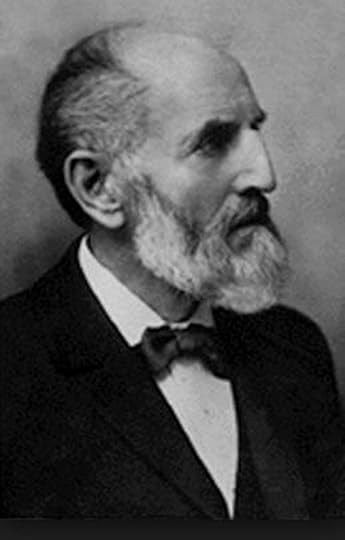 How similar was Susan B. Anthony to her brother Daniel? Why should serious students of our famous suffragist take note of him?
How similar was Susan B. Anthony to her brother Daniel? Why should serious students of our famous suffragist take note of him?
She had the most profound admiration for his commanding intellect, his business ability, his courage, aggressiveness and determination, and a strong pride in his achievements and the place he had made for himself in the history of his adopted State. But far deeper than this was her love for him because of his long years of devotion to her . . . . She felt that always and under all circumstances she could depend on him for whatever she needed….
Did she always feel that way? When I consider that she she made this comment about him late in life, I have to wonder. There were surely moments when she agonized at the scrapes he got into during his younger years. (For example, there was no way to excuse his horse thefts.) Remember that Harper wrote this shortly after D.R.’s death at the age of 80. By then, Susan had the accumulated wisdom and tolerance of hindsight.
Two Apples From the Same Family Tree
Susan’s affection and respect for her brother Daniel Read Anthony demonstrates why he deserves more than a nod from people with a serious interest in the famous suffragist. Yes, they had many differences. He was male, she female. He married, while she remained single. He made his home in Leavenworth, KS while she made hers in Rochester, NY. He had a terrible temper while she could be quite diplomatic. Nevertheless, reflecting Susan’s generous viewpoint in old age, Harper sweeps away all these contrasts with this comparison of the two siblings:
He was much more like her than was any other member of the family and their similarity of characteristics had long been a matter of public comment. (ibid)
Taking Harper at face value, she implied the following: if you want to know a male counterpart of Susan B. Anthony, look to Daniel Read Anthony.
Some readers will be aghast at this comparison. Comments?
The post Male Counterpart of Susan B. Anthony? appeared first on Susan B. Anthony Family.
June 27, 2017
Historical fiction: when the research trail goes cold
 Last time we discussed two kinds of historical fiction:
Last time we discussed two kinds of historical fiction:
historical-era fiction that uses a few props from a previous timeframe as a general backdrop for fictional characters, and
fact-based historical fiction that contains authentic details from books, newspapers, and artifacts that reference real people who lived and breathed. This type of writing also brings in popular social movements, architecture, music, literature, technology, and fashion. Moving beyond the available printed materials, I also love to walk the actual streets where my characters spent their days.
Balancing Truth and Imagination in Historical Fiction
One I’ve done the research and mapped out the known events, it’s time to weave in some imaginary details. Here are two examples of when I fictionalize:
The trail goes dry and I am left with gaps. I know that a character arrived at a certain place and time–for example, D.R. Anthony married Anna Osborn on Martha’s Vineyard in 1864– but have no idea how or why. So I fashion a courtship that is plausible, based on what I know of his character, preferences, current interests, and financial situation.
The factual record gives too many examples of certain activities in a character’s life and none of other important aspects. For example, although D.R. Anthony was involved in several major fires and numerous shootouts, I do not report every one of those episodes. If I did, there would be no room to develop his life as a family man or strong supporter of his sister Susan’s activities. (She frequently used his home as a base to campaign for woman suffrage.) To round out the picture of the man’s everyday, private life, it behooves me to fill in the cracks of reported events with snippets of pure fiction. However, even in these most creative moments I try to match documented thought and speech patterns.
For another take on this fascinating genre of literature, click here.
The post Historical fiction: when the research trail goes cold appeared first on Susan B. Anthony Family.
June 21, 2017
Historical fiction lovers: what’s your preference?
 Readers of The Truth About Daniel have been asking me what it takes to write historical fiction. To answer, I like to discuss two different aspects of this genre. This will be a two-part post.
Readers of The Truth About Daniel have been asking me what it takes to write historical fiction. To answer, I like to discuss two different aspects of this genre. This will be a two-part post.
Historical Era Fiction
A writer friend of mine distinguishes between fact-based historical fiction and historical era fiction. The latter places events within the backdrop of an era but does not concern itself with actual happenings or people who really lived then and there. More than 90% of a book in this category comes from the imagination of the writer. While this can be fun, it does little to advance the reader’s grasp of a historical person or place. Historical romances often fall into this category.
An example of such a book is A Daughter’s Inheritance, a late 19th-century novel set in my hometown of Rochester, NY. (Check out my Goodreads review here.) Because it fails to mention any of the remarkable individuals who lived here at that time (people that the characters would surely have known) or make reference to even one street or landmark, it could have happened anywhere. Very disappointing to a reader who hoped to add to her knowledge of that era in that place, but it still falls under the broad category of historical fiction.
Fact-Based Historical Fiction
By contrast, fact-based historical fiction involves stories about events that involved real people who lived in a certain era. Because no one was following them around with a voice recorder, we don’t have transcriptions of all their conversations. For that reason, some dialogue must be fictionalized, but it is largely based on real quotes of the person. A few scenes may be, too, but they are carefully-crafted to portray character traits that are evident from other things those people did. Fact-based historical fiction leans heavily on fact, with less than half (in my case, only about 10-15%) of the story coming from the author’s imagination.
Next time: How much research?
The post Historical fiction lovers: what’s your preference? appeared first on Susan B. Anthony Family.
June 18, 2017
Susan LaFlesche Picotte built upon Susan B.’s foundation
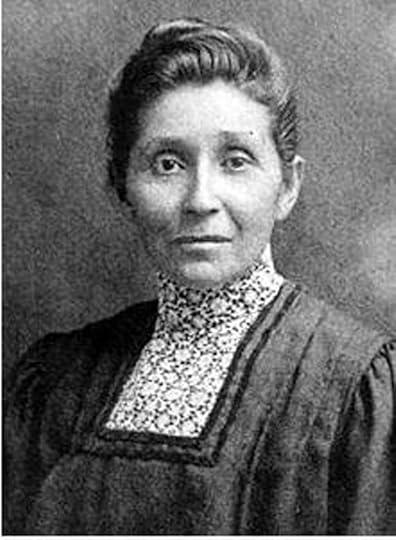 Susan LaFlesche Picotte, a Nebraska doctor and and reformer, had credentials that wowed me and reminded of Susan B. Anthony. Google saluted her yesterday; click here to what Wikipedia says.
Susan LaFlesche Picotte, a Nebraska doctor and and reformer, had credentials that wowed me and reminded of Susan B. Anthony. Google saluted her yesterday; click here to what Wikipedia says.
Biracial, Bilingual
Susan LaFlesche Picotte was born at the close of the Civil War, the same year that Susan Anthony first visited her brother Daniel in Kansas. LaFleshe’s heritage, part French and part Omaha Indian, allowed her to grow up in a household that was both biracial and bilingual. This set the stage for her extensive education and later advocacy on the part of Native Americans.
Women in Medicine
By 1865, many of Anthony’s pioneering suffragists had preceded LaFlesche through gates of higher education. For example, Elizabeth Blackwell became the first woman doctor in the U.S., graduating Geneva Medical College in 1849. As a student Blackwell faced rejection from most of the students and faculty. Blackwell established the New York Infirmary, where woman physicians could practice, and in 1850 wrote Medicine as a Profession for Women.
In 1886, LaFlesche enrolled in medical school at Woman’s Medical College of Pennsylvania (founded in 1850 in Philadelphia). Supported by abolitionists and Quakers, it has an interesting history all its own.
How difficult was it for LaFlesche, a half-French, half-Omaha woman from the frontier, to mingle with eastern white women? Despite her challenges, she graduated top of her class and began a life of medical service and reform among Native Americans. Not only did she mount hygeine campaigns against the medical scourges of her era (cholera and tuberculosis, for example), but she also took on the issues of land rights and inheritances for Native Americans. This was a task fraught with much bureaucratic red tape. LaFlesche, after marrying the alcoholic Henry Picotte, followed previous female reformers in their campaign against alcohol.
New Battles of Her Own
It is easy to assume that Susan LaFlesche Picotte stood on the shoulders of white reformers like Anthony and Blackwell. But the story is more complex than that. Unfortunately, I don’t know enough about Native American history to understand all the nuances. I do know that Daniel Read Anthony (Susan’s brother) and many other white land speculators in Kansas and Nebraska rushed to buy prime land that the U.S. government “made available” from the Delaware Indians. Whether those transactions were equitable for the Delawares I leave to other historians.
I can also assert that the Anthonys’ quest for universal suffrage, which included rights for women and blacks, turned a blind eye to the concerns of Native Americans. Miss LaFlesche, born halfway through Miss Anthony’s life, no doubt benefited from the efforts of earlier reformers. But she went on to cross bridges that her foremothers never imagined.
The post Susan LaFlesche Picotte built upon Susan B.’s foundation appeared first on Susan B. Anthony Family.
June 16, 2017
Was Emily Dickinson as miserable as film suggests?
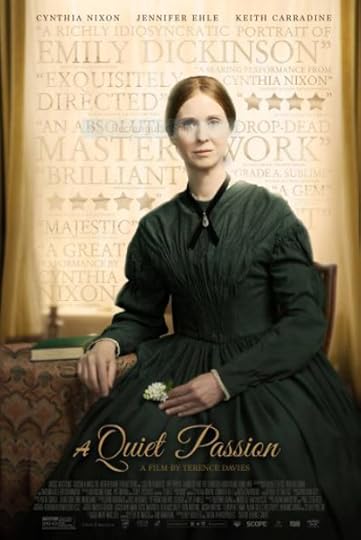 The film A Quiet Passion did not serve up the Emily Dickinson I know. Having read some biographies of Dickinson as well as her poetry, I have to say that the movie seemed pretty one-sided in portraying her life as one of angst and frustration. That’s part of her story, but there’s much more. True, artists (visual, verbal, and cinematic) achieve their goals by focusing on some things and eliminating others; but I think, when telling a life, we have some obligation to portray it accurately.
The film A Quiet Passion did not serve up the Emily Dickinson I know. Having read some biographies of Dickinson as well as her poetry, I have to say that the movie seemed pretty one-sided in portraying her life as one of angst and frustration. That’s part of her story, but there’s much more. True, artists (visual, verbal, and cinematic) achieve their goals by focusing on some things and eliminating others; but I think, when telling a life, we have some obligation to portray it accurately.
A One-Sided View
I wanted to see the movie because I have enjoyed Dickinson. Not only for that reason, but also because she was a 19th century woman. I wanted to soak up the scenery, room interiors, clothing, and customs of that period.
In this I was partly satisfied. It opened with an accurate view of her doubts about organized religion. We learned that she had mixed feelings about marriage, as did many other women of that era. That rang true for me because I know that Susan B. Anthony and Elizabeth Cady Stanton also objected to the way marital advantages fell more to men than to women.
However,the film over-developed (at least IMHO) the Victorian preoccupation with death. At least 2/3 of it involved someone’s slow demise, as well as Dickinson’s anticipation and reaction to those deaths. The clothing was beautiful, but the film skimped on scenery and interiors. We got a strong dose of Dickinson’s irritable reclusiveness as her final illness progressed, but little of her joyful and whimsical poetry from earlier in her life.
Altogether, the movie reminded me of a self-absorbed poetry student I once knew who believed that people have to be miserable in order to write good verse. Apparently, the filmmakers were of a similar mind.
Well, I beg to differ. Emily Dickinson was a multi-faceted individual and poet, but you wouldn’t guess it from A Quiet Pasion.
Next time: Ruminating on history.
The post Was Emily Dickinson as miserable as film suggests? appeared first on Susan B. Anthony Family.
http://SusanBAnthonyFamily.com/
or her brother Daniel Read (D.R.) Anthony. I share all of these on my blog. You can also get special insights into my new b Whenever I travel, I stop in to visit a site connected with Susan B. Anthony
or her brother Daniel Read (D.R.) Anthony. I share all of these on my blog. You can also get special insights into my new book The Truth About Daniel, based on D.R.'s romance and his rambunctious days as an original Kansas Jayhawker ...more
- Jeanne Gehret's profile
- 15 followers


